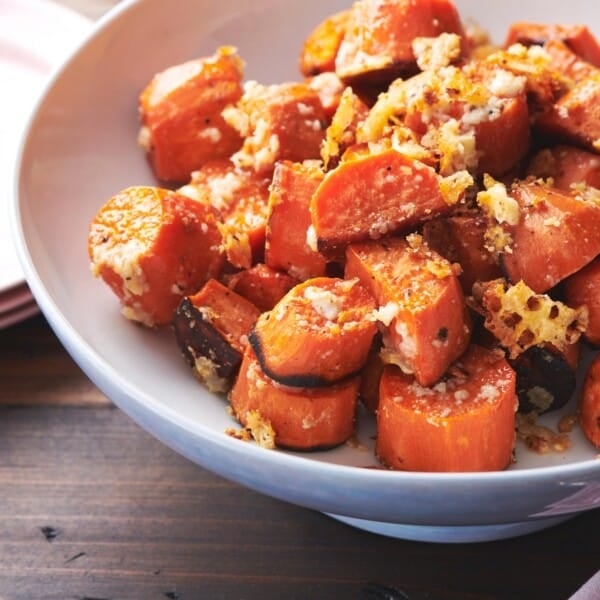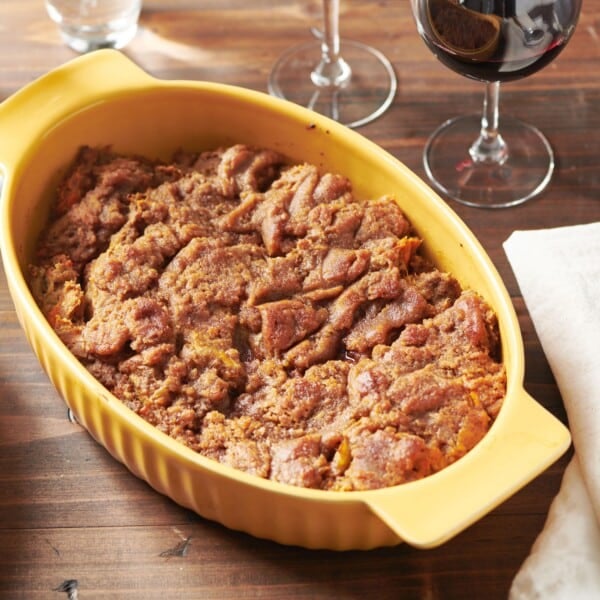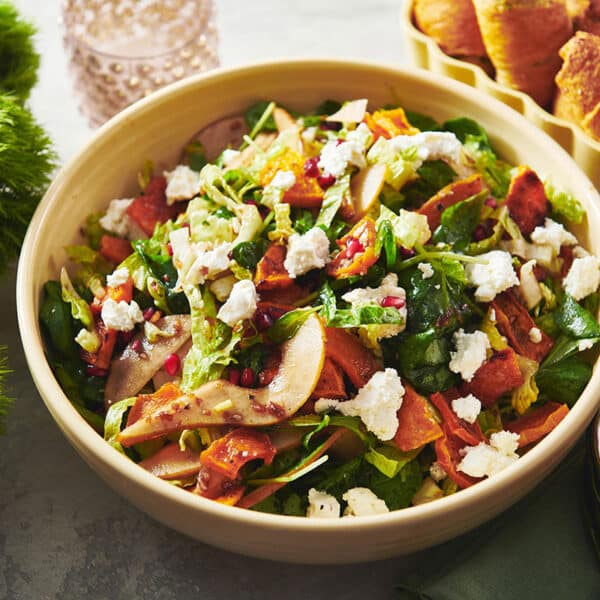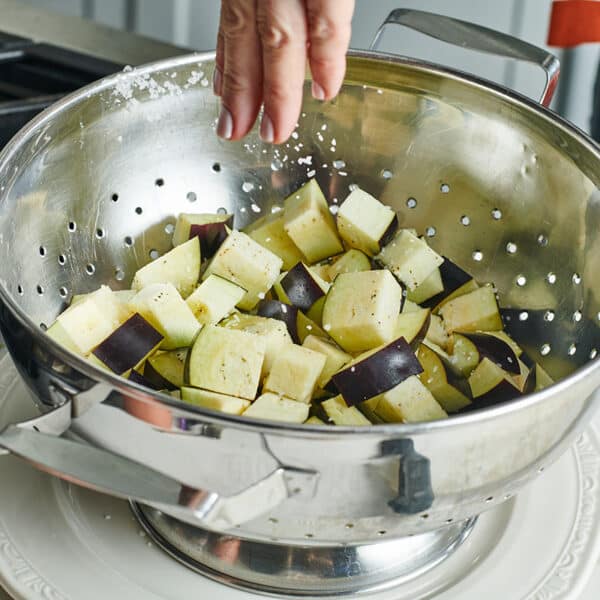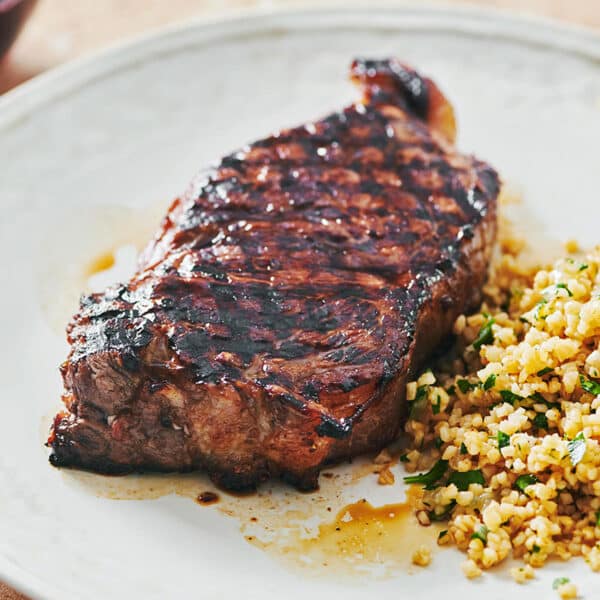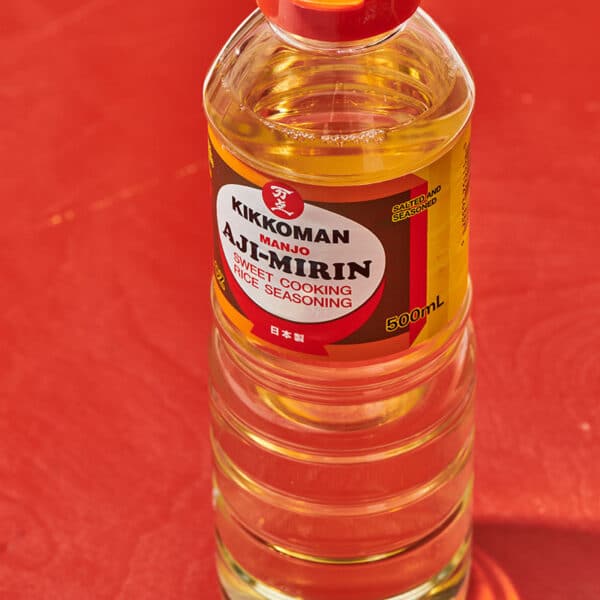How to Carve a Turkey
on Oct 20, 2021, Updated Jan 19, 2025
This post may contain affiliate links. Please read our disclosure policy.
Everything you need to know about carving and presenting a roasted turkey for Thanksgiving
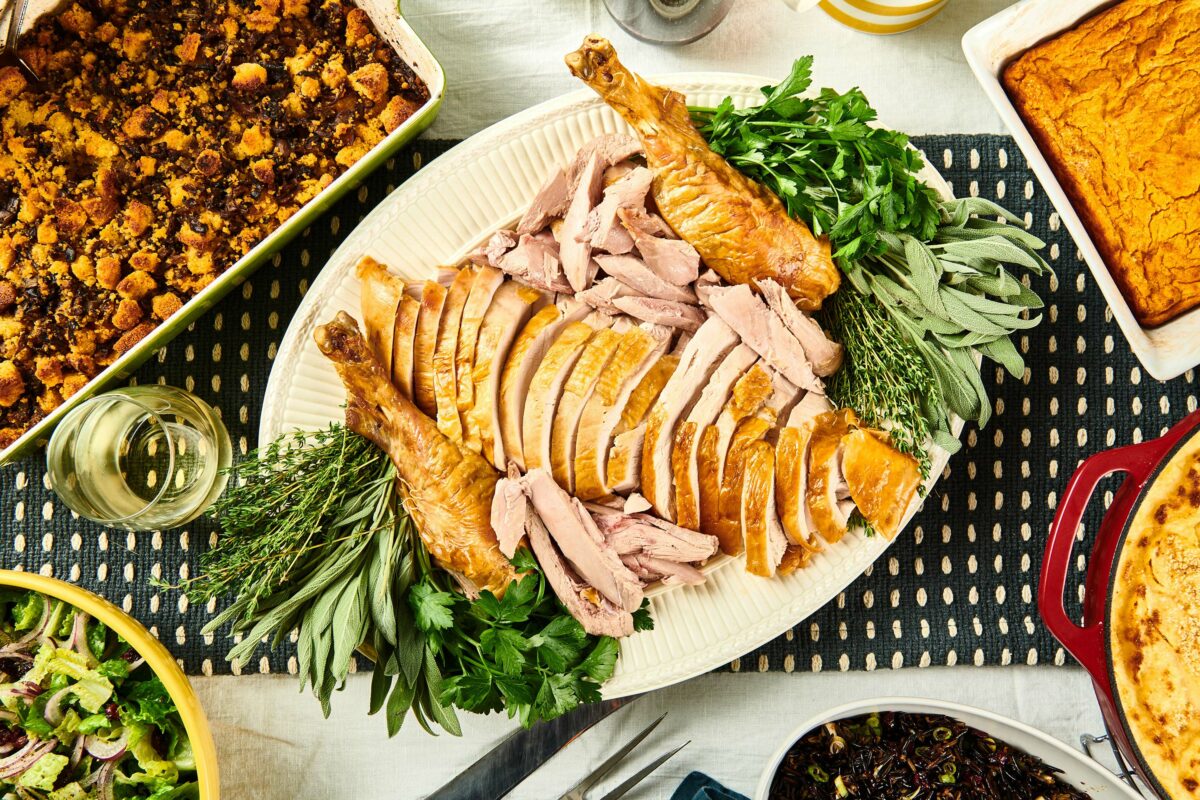
So this year, it’s YOU who’s going to carve the turkey! It’s a pretty important job, but you know that. Take it step by step, read through all of these turkey carving tips, and you’ll be great. It’s basically like a bigger roast chicken, so don’t be intimidated, don’t rush, and think about it one step at a time.
I became the turkey carver in my family many years ago. I’m to the point where I don’t mind the three or so relatives and friends who stand around watching and drinking wine, snagging little pieces of breast and crispy bits as the carving process unfolds. You can do this!
By signing up, you agree to our Privacy Policy.
It really doesn’t feel like Thanksgiving without a beautiful golden brown roasted turkey anchoring the table. Some good turkey recipe choices: Easy Roasted Thanksgiving Turkey Recipe and Cajun Roast Turkey. And, of course, served with all of those family favorite side dishes, like Cornbread Dressing, Butternut Squash Casserole, and Cranberry Sauce.
What's In This Post?
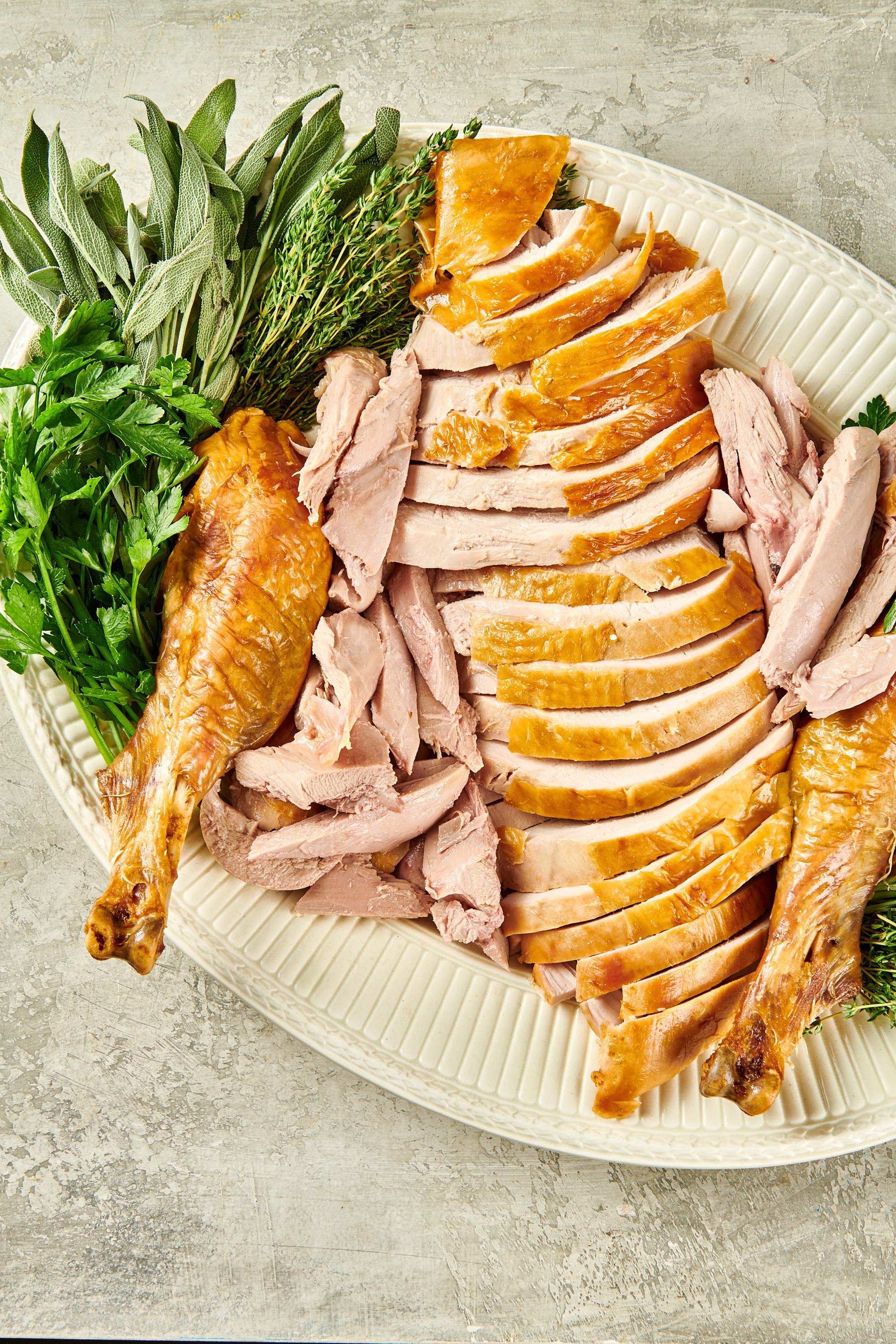
How Long to Rest Turkey Before Carving
When you are planning your turkey cooking time, remember to allow for at least a ½ hour and up to 1 hour for the turkey to rest after you remove the turkey from the oven. You can let it rest on the rack in the pan or on a cutting board with a moat to catch the juices. The resting time may seem long but err on the side of longer vs. shorter for the juiciest turkey.
This will allow the turkey to re-absorb the juices so they won’t run out onto the cutting board when you cut into it, leaving you with dry turkey. Letting the turkey sit for this length of time ensures juicy turkey, especially the turkey breast (it cooks faster than dark meat and tends to lose its moistness when sliced too quickly).
Don’t tent the turkey with foil, which can make the skin soggy. Letting the turkey sit uncovered preserves the crispness of the skin.
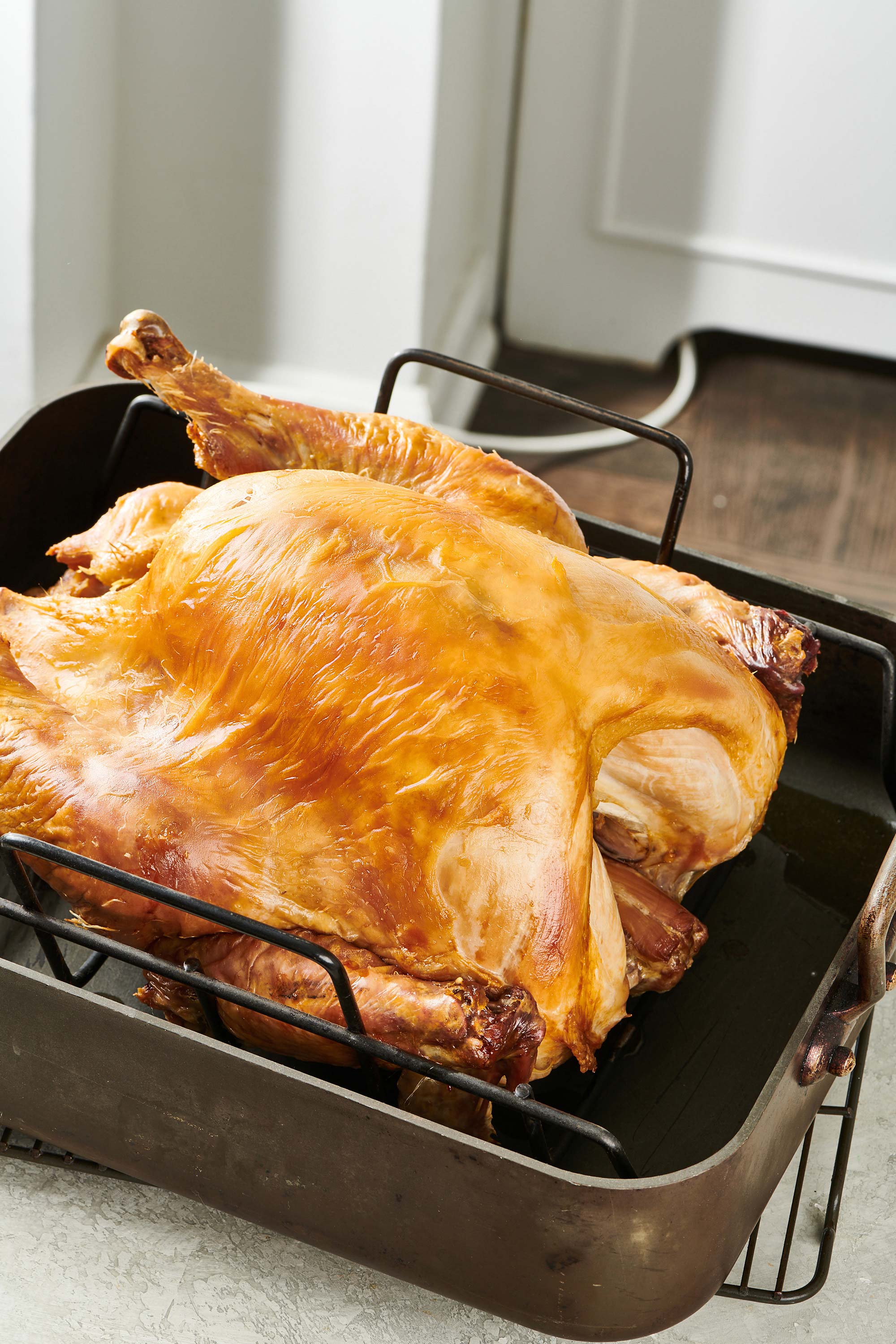
Where to Carve the Turkey
We’ve all seen the Norman Rockwell-esque images of a whole turkey being presented at the table, carved right in front of the seated guests. If you are not in a hurry and you have a lot of turkey carving confidence and loving family and friends, go for it.
However, because carving a turkey usually takes up a lot of space, I prefer to do it in the kitchen. First, I cut the turkey into pieces, and then those smaller pieces are sliced up. I usually move the pieces from the main cutting board to a smaller cutting board or platter, then return them to the larger cutting board for the final slicing after wiping down the board. After that, the turkey gets arranged on the clean serving platter, with garnishes.
All of this takes time and space and can be somewhat messy, so my advice is to take care of this in the kitchen while others get the rest of the dishes to the table or the buffet.
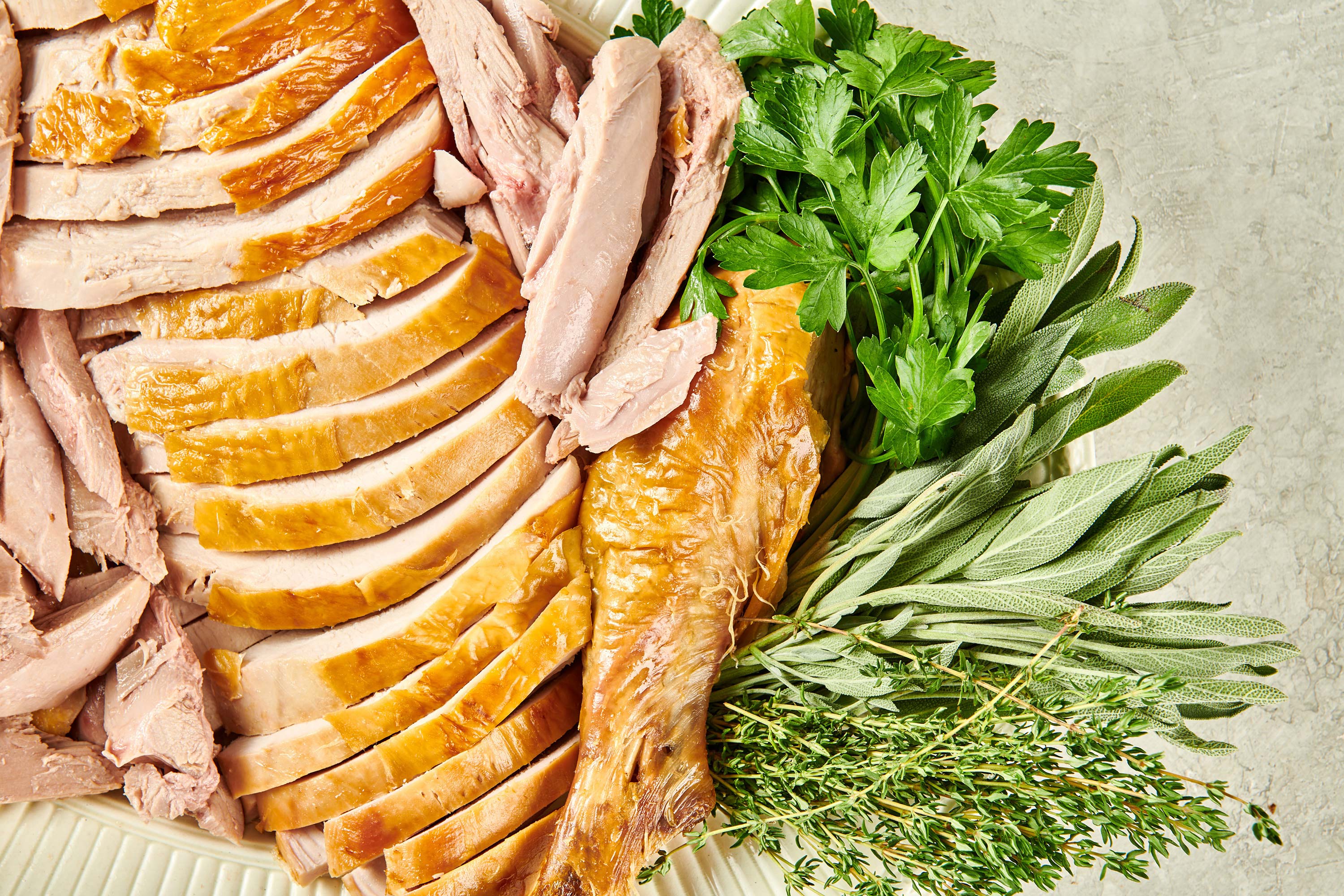
How to Properly Carve a Roast Turkey Step-by-Step
Here’s how to carve a turkey like a pro! (Including how to carve turkey thighs, which can feel tricky!)
- Prepare to carve: Make sure to tip the turkey before you remove it from the roasting pan to pour any juices that have accumulated in the turkey cavity back into the roasting pan, where they will become part of the gravy or the au jus. Remove any trussing strings or closures if you used them. If you have ingredients stuffed into the bird, like herbs, onions, or citrus, remove and discard them — they will have done their job of seasoning the turkey and the pan juices.
- Set up a carving station: It’s important to have everything you will need on hand when you start carving, so you’re not running around the kitchen with turkey juice up to your elbows. Here’s what you need at your carving station: paper towels, clean dishtowels, a large cutting board, a serving platter, another cutting board or platter to hold pieces as you remove them, a carving knife, and a sturdy fork.
- Remove the legs: Remove the thigh and leg together. Place the turkey breast side up on a carving board with a moat to catch the juices. Using a carving knife or a large sharp chef’s knife, cut through the skin between a leg and the body of the bird. Gently pull the leg outward to locate the joint where the thigh meets the body. Cut through the joint and separate the leg from the body. Remove the second leg in the same way. Place them to the side.
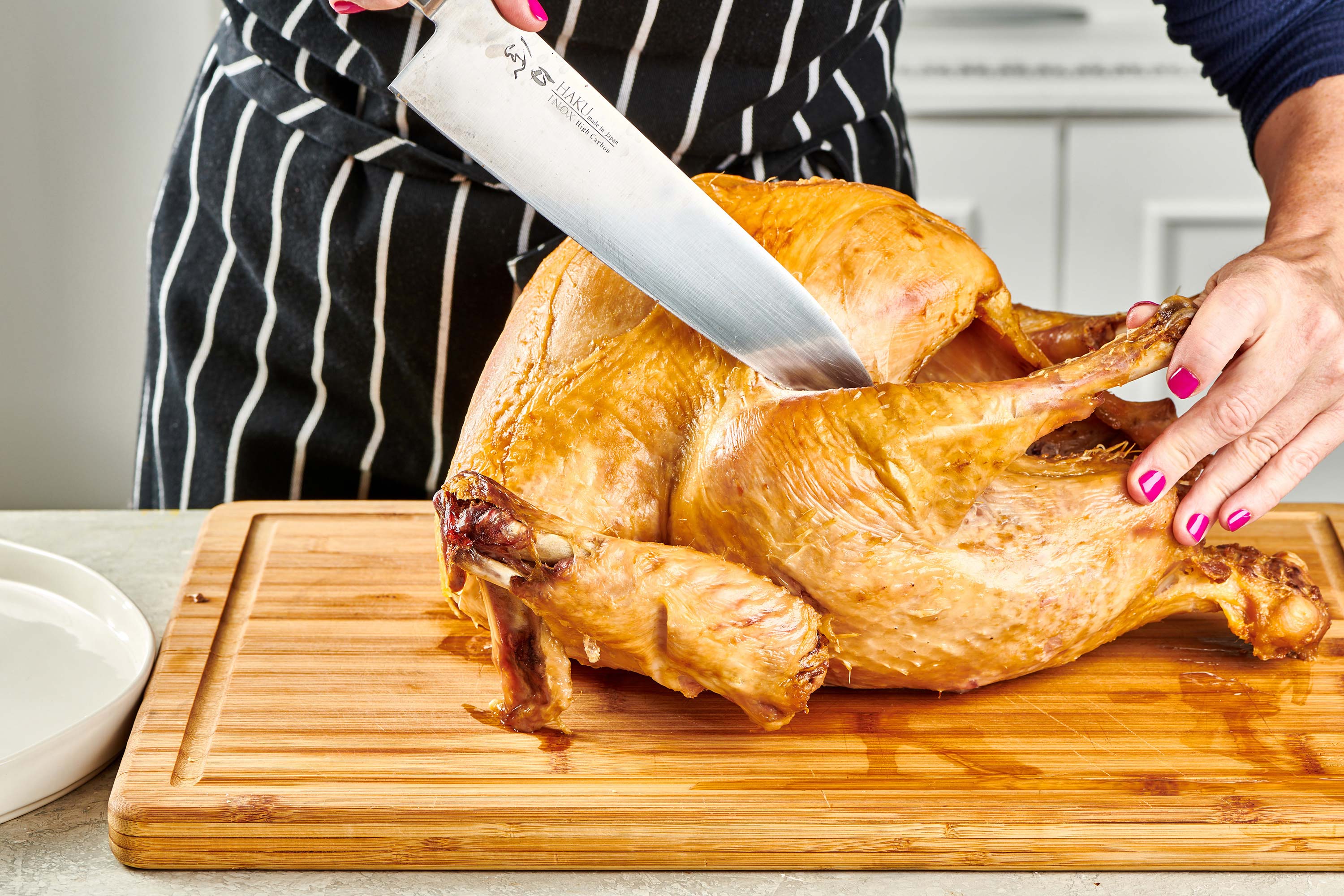
- Cut off the wings: Remove the wings in the same way you removed the legs. If the wings are tucked behind the bird, untuck them. Using your knife, cut through the skin between a wing and the bird. Gently pull the wing outward, then cut through the joint, separating the wing from the body. Remove the second wing. Place them on the serving platter.
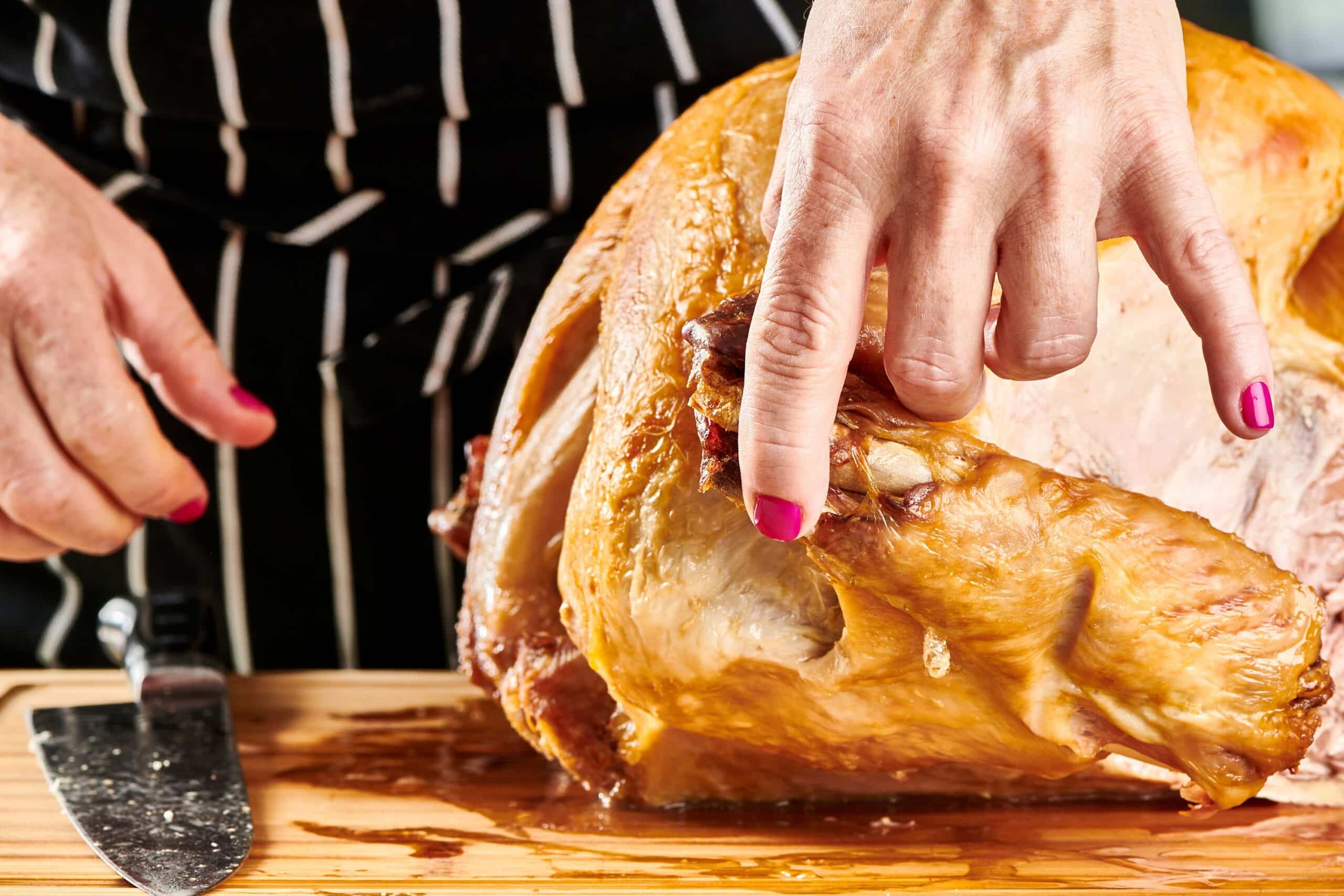
- Remove the breasts: Use a sturdy fork to secure the breast, then using your knife, just above the thigh and wing joints, make a deep horizontal cut through the skin and the breast meat towards the bone. Place your knife along the side of the breastbone on the same side as you made the horizontal cut, starting from the neck joint. Slice downwards, following the ribs of the bird. Try to get as much breast meat as possible in one piece, cutting along the breastbone and ribs until you slice through to the horizontal cut. You should be able to remove that side of the breast completely. Place the breast on the extra cutting board or platter, and repeat on the other side.
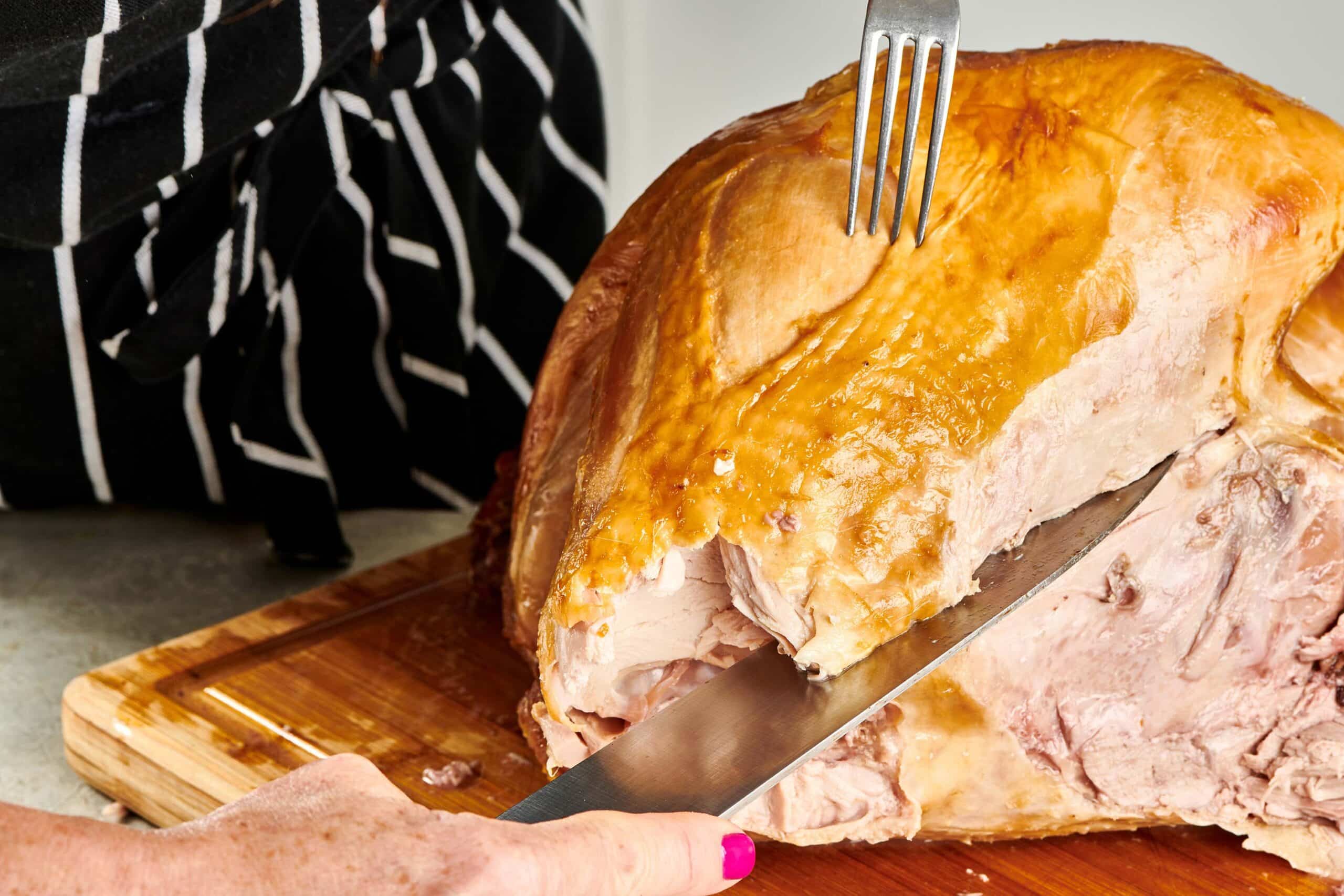
- Separate the thigh and the drumstick: Set aside the carcass (don’t throw it away! You can make amazing stock with it!). Wipe down your cutting board. Return the turkey legs to the cutting board, skin side up. Separate the thighs from the drumsticks by slicing between them at the joint. Repeat with the other leg. Place the drumsticks on the serving platter.
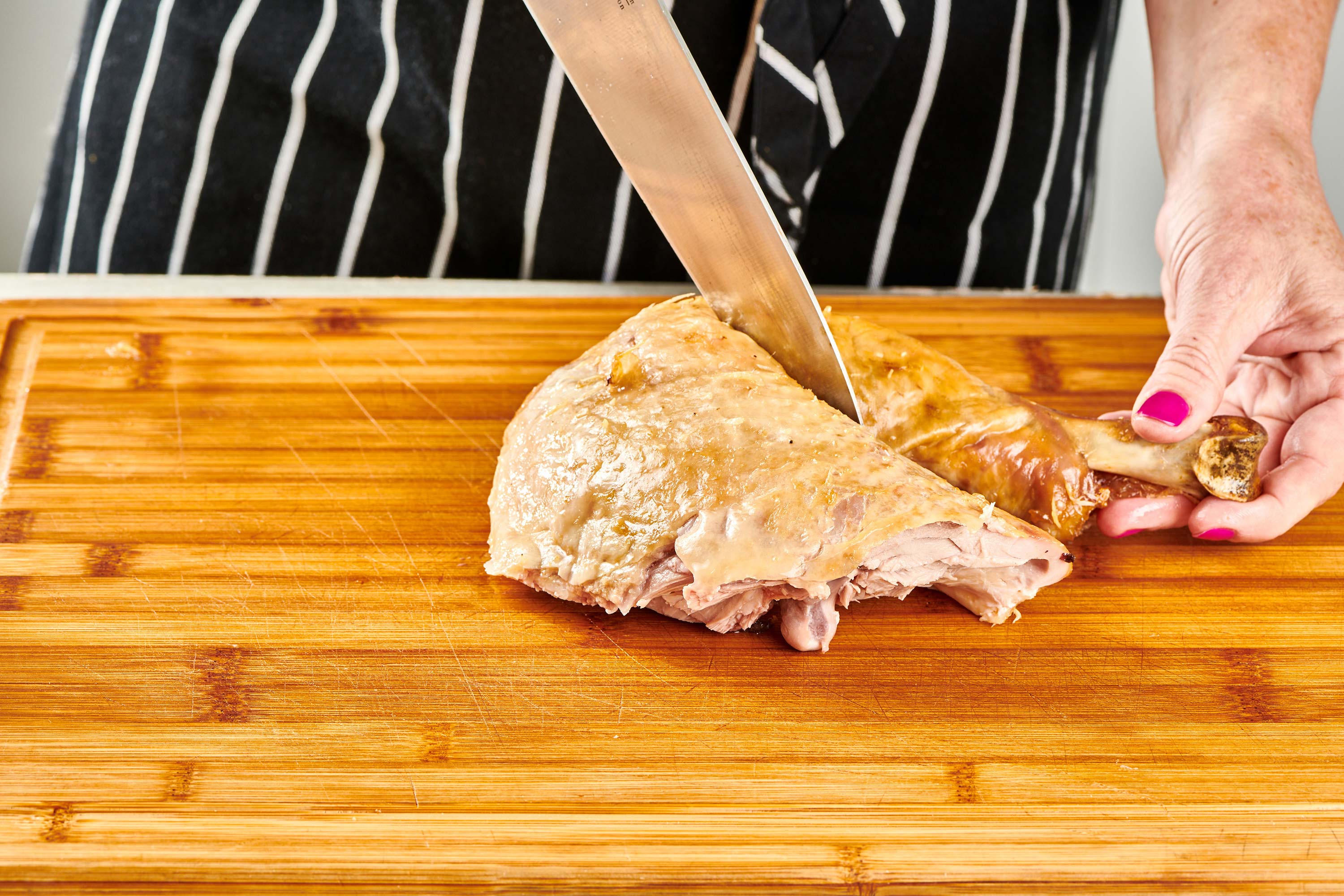
- Carve the thighs: Cut the thigh meat from the bone following the length of the bone. Try to get the meat off in a few large pieces. Slice those pieces crosswise into slices about ⅓-inch thick. Transfer them to the serving platter, along with the drumsticks.
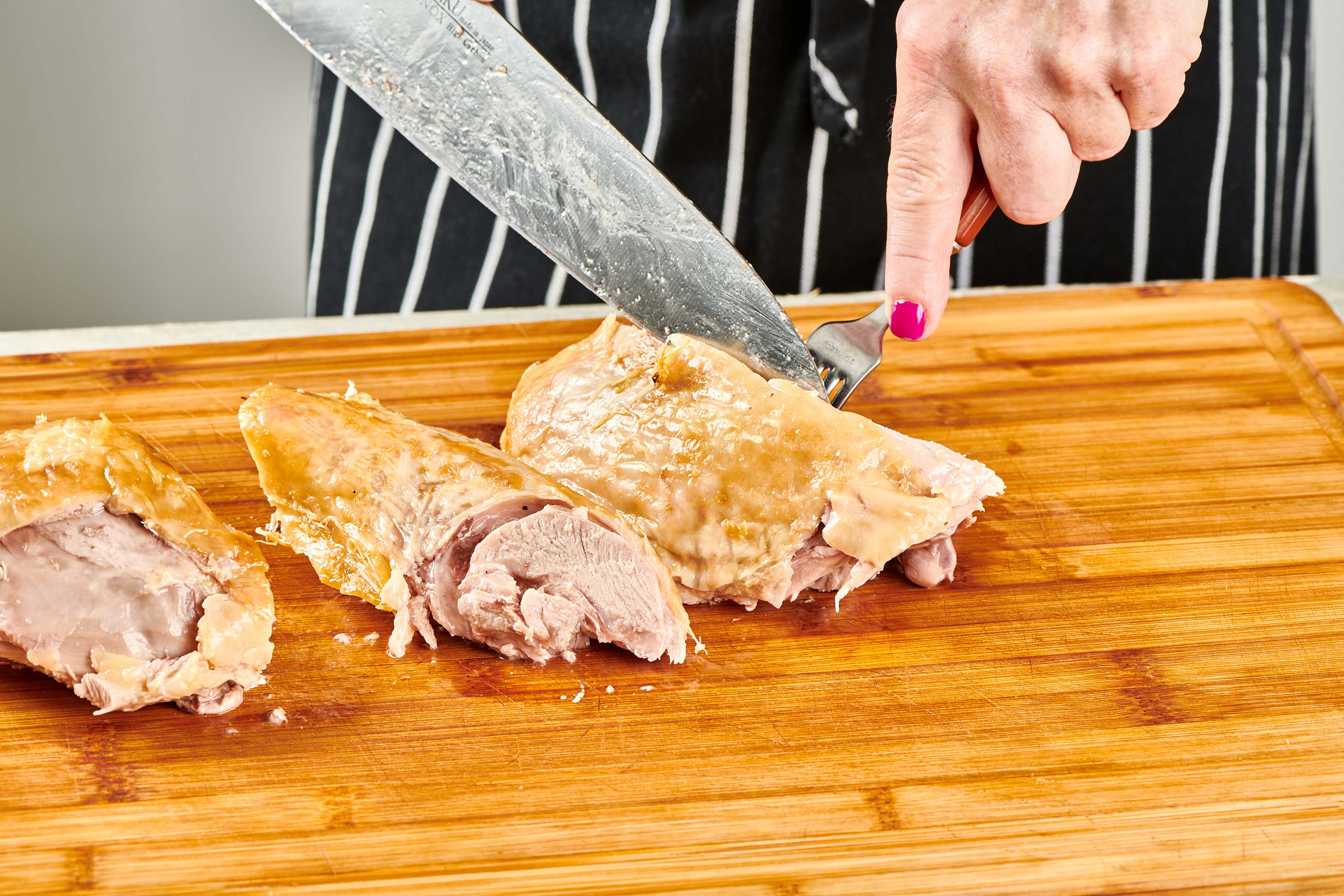
- Slice the breasts: Place the breasts skin side up on the cutting board. Cut each breast crosswise into slices as thin or thick as you like them, about ¼- to ⅓-inch thick. Try to keep the slices stacked neatly together on the cutting board for the best presentation. Slide your knife or a spatula under the sliced breast and transfer it to the serving platter, fanning out the slices.
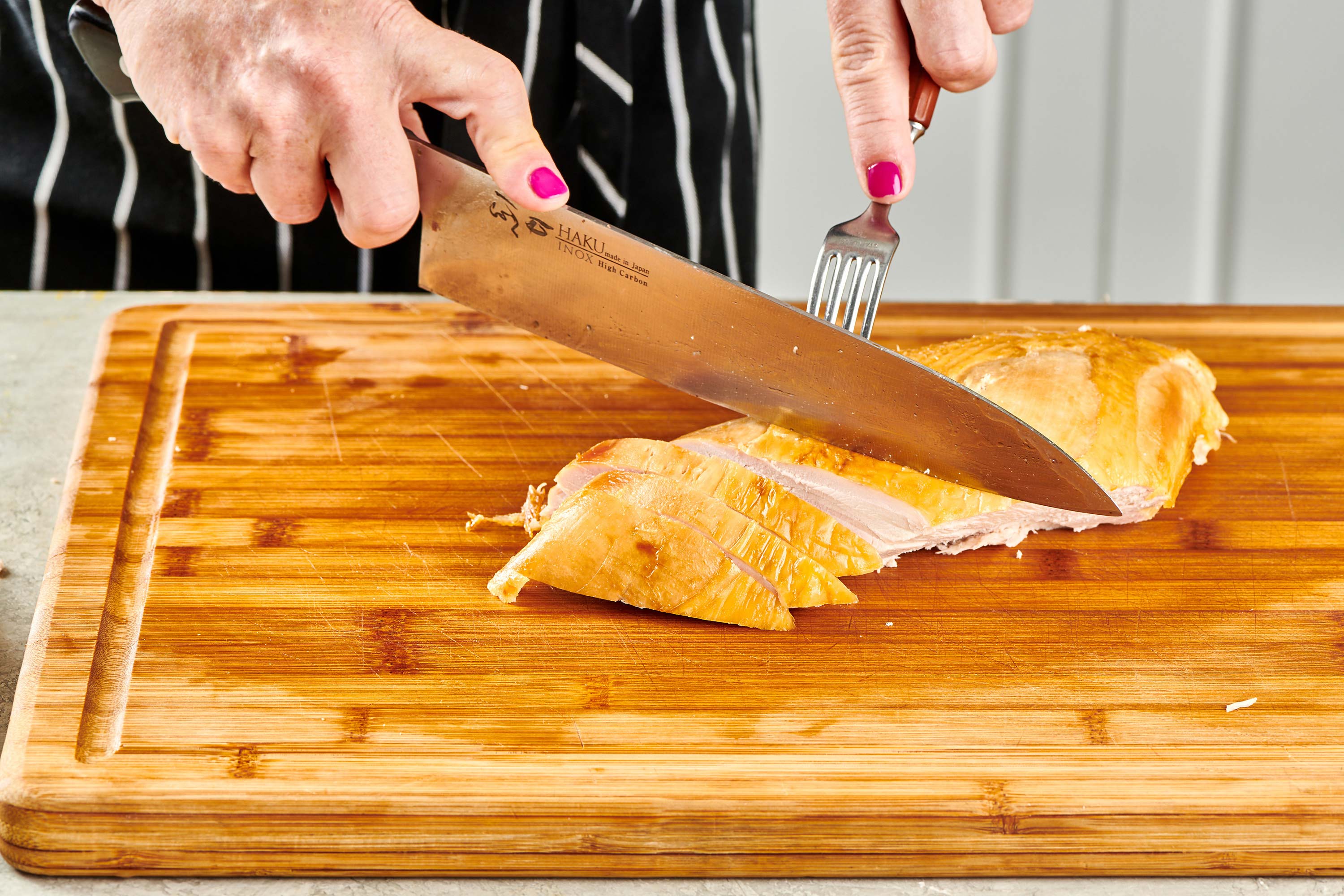
- Arrange the turkey on the platter: Rearrange the turkey if needed so that it looks fabulous, then add some garnishes if you like. Sprigs of fresh herbs are great: thyme, sage, rosemary, or whatever you use to season your bird.
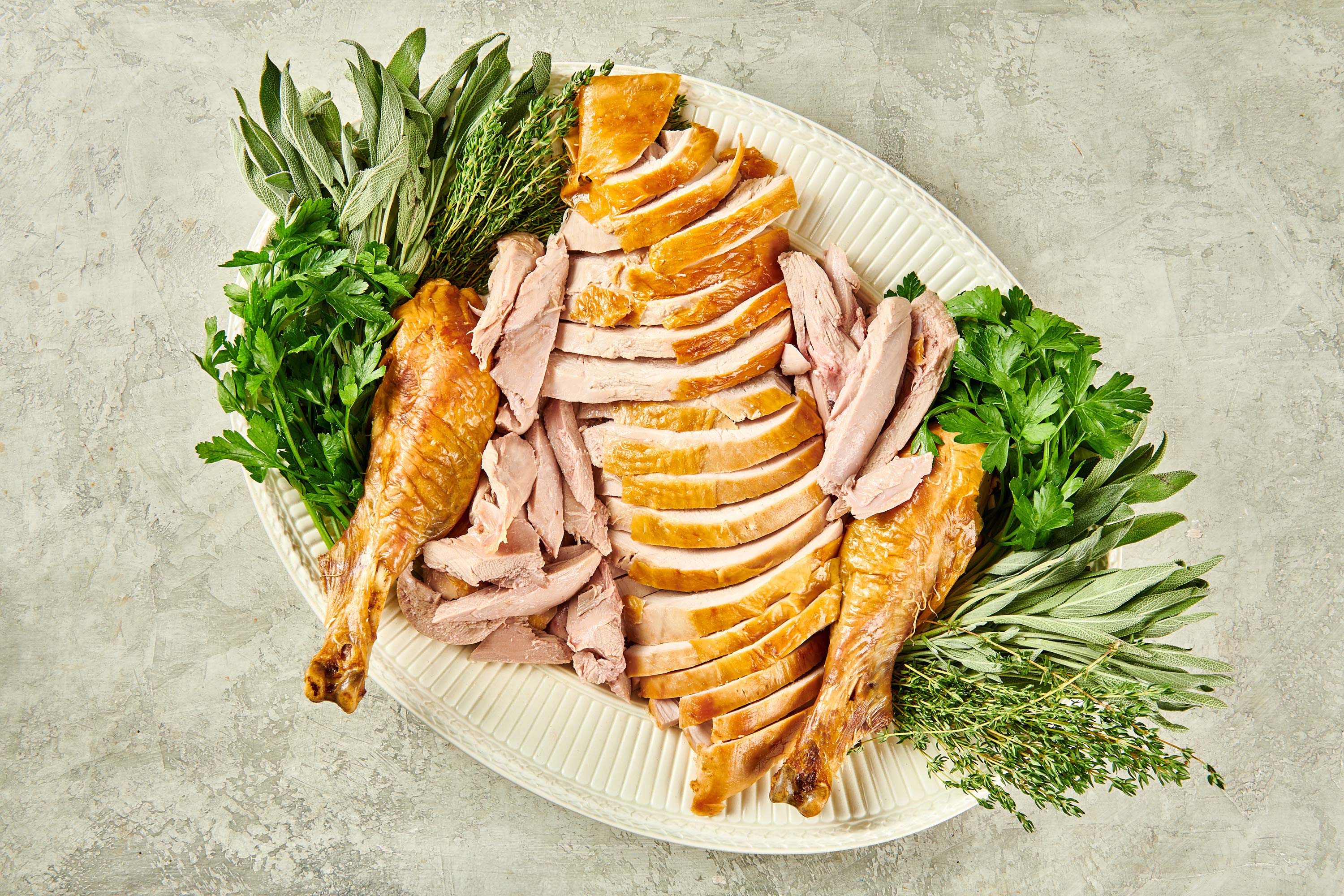
FAQs
You can either use a carving knife or a chef’s knife, at least 8 inches long, preferably 10 inches. Whatever knife you pick, the sharper, the better. You’ll want a knife that isn’t too thin or too thick. I do not recommend a serrated knife or an electric carving knife, which I think tends to shred the meat instead of slicing it cleanly.
The first part of the turkey to remove is the legs. The legs are the easiest to remove, and they tend to get in the way of removing the breasts, so it is good to get them done first. Next up are the wings, which are also separate from the body and easy to remove. Last, you will remove the breasts and then slice it all up.
The hardest part of carving turkey legs is finding the joint that separates the thigh from the drumstick. This may require putting down your knife and feeling the leg with your hands to understand where the bones meet.
Once you have located the joint, stick your knife between the bones so you are left with a whole thigh and a whole drumstick. Cut the thigh meat from the bone following the length of the bone. Try to get the meat off in a few large pieces. Slice those pieces crosswise into slices about ⅓-inch thick. Transfer them to the serving platter, along with the drumsticks.
How to Garnish a Platter of Sliced Turkey
Add sprigs of fresh herbs to your plate: thyme, sage, rosemary, or whatever you use to season your bird. You can also add some wedges of citrus, such as lemons, oranges, clementines, or limes. Color is very helpful in making your gorgeous carved turkey look even more appealing.
What to Serve With Roast Turkey for Thanksgiving
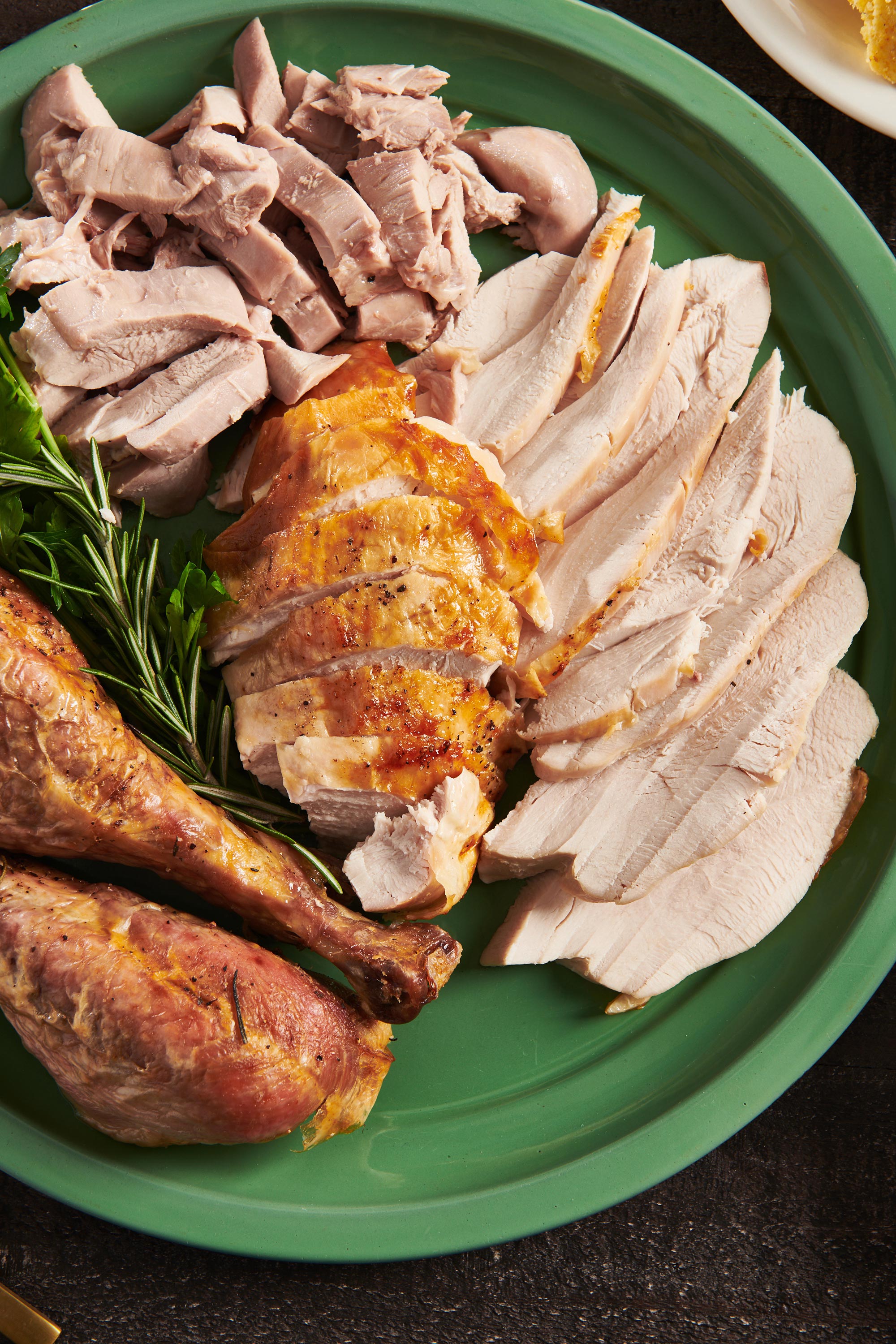
More Turkey Tips
- How to Safely Thaw Frozen Turkey
- How to Brine Turkey Breast
- How to Freeze Leftover Turkey
- How Long to Cook a Turkey
Pin this now to find it later
Pin It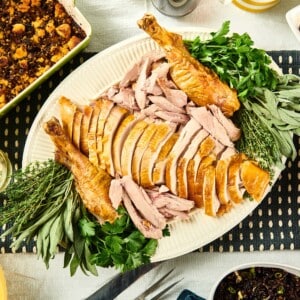
How to Carve a Turkey
Equipment
Ingredients
- 1 Whole roasted turkey
- Fresh herbs or citrus wedges (optional)
Instructions
- Make sure to tip the turkey before you remove it from the roasting pan to pour any juices that have accumulated in the turkey cavity back into the roasting pan, where they will become part of the gravy or the au jus. Remove any trussing strings or closures if you used them. If you have ingredients stuffed into the bird, like herbs, onions, or citrus, remove and discard them — they will have done their job of seasoning the turkey and the pan juices.
- It’s important to have everything you will need on hand when you start carving so you’re not running around the kitchen with turkey juice up to your elbows. Here’s what you need at your carving station: paper towels, clean dishtowels, a large cutting board, a serving platter, another cutting board or platter to hold pieces as you remove them, a carving knife, and a sturdy fork.
- Remove the thigh and leg together. Place the turkey breast side up on a carving board with a moat to catch the juices. Using a carving knife or a large sharp chef’s knife, cut through the skin between a leg and the body of the bird. Gently pull the leg outward to locate the joint where the thigh meets the body. Cut through the joint and separate the leg from the body. Remove the second leg in the same way. Place them to the side.
- Remove the wings in the same way you removed the legs. If the wings are tucked behind the bird, untuck them. Using your knife, cut through the skin between a wing and the bird. Gently pull the wing outward, then cut through the joint, separating the wing from the body. Remove the second wing. Place them on the serving platter.
- Use a sturdy fork to secure the breast, then using your knife, just above the thigh and wing joints, make a deep horizontal cut through the skin and the breast meat towards the bone. Place your knife along the side of the breastbone on the same side as you made the horizontal cut, starting from the neck joint. Slice downwards, following the ribs of the bird. Try to get as much breast meat as possible in one piece, cutting along the breastbone and ribs until you slice through to the horizontal cut. You should be able to remove that side of the breast completely. Place the breast on the extra cutting board or platter, and repeat on the other side.
- Set aside the carcass (don’t throw it away! You can make amazing stock with it!). Wipe down your cutting board. Return the turkey legs to the cutting board, skin side up. Separate the thighs from the drumsticks by slicing between them at the joint. Repeat with the other leg. Place the drumsticks on the serving platter.
- Cut the thigh meat from the bone following the length of the bone. Try to get the meat off in a few large pieces. Slice those pieces crosswise into slices about ⅓-inch thick. Transfer them to the serving platter, along with the drumsticks.
- Place the breasts skin side up on the cutting board. Cut each breast crosswise into slices as thin or thick as you like them, about ¼- to ⅓-inch thick. Try to keep the slices stacked neatly together on the cutting board for the best presentation. Slide your knife or a spatula under the sliced breast and transfer it to the serving platter, fanning out the slices.
- Rearrange the turkey if needed so that it looks fabulous, then add some garnishes if you like. Sprigs of fresh herbs are great: thyme, sage, rosemary, or whatever you use to season your bird.
